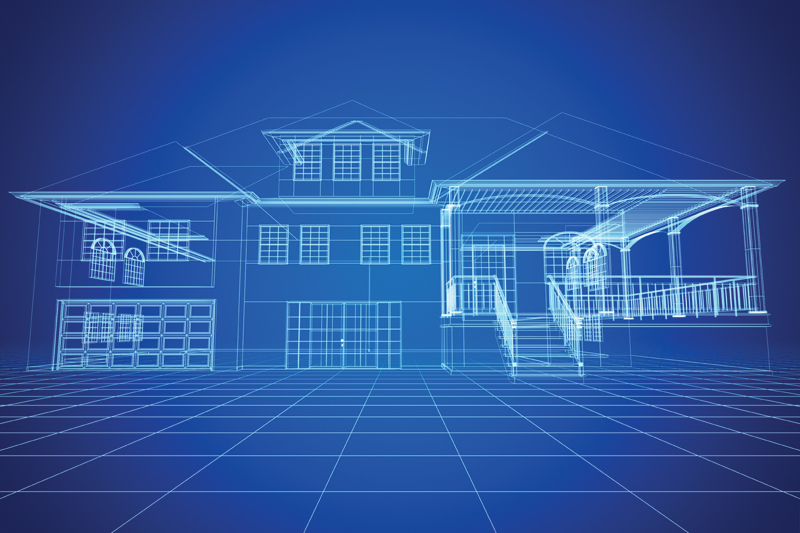For a City that relies solely on groundwater, conservation is a given challenge. Add to that a rapidly growing population and a strategy to reduce water use by 20 per cent by 2020, and you’ve got one ambitious target. Guelph, Ontario is the fifth fastest growing city in Canada. Currently, population sits at around 118,000, but it is expected to rise to 144,500 by the year 2021. How will the city meet the goal?
Planners believe that builders have a role to play in municipal water use reduction. That’s the reason that the City launched Blue Built Homes, a water-efficiency standard and rebate pilot program. The initiative encourages collaboration with local builders to promote water efficiency in new building developments and promises long-term financial savings for consumers. The goal is to reduce strain on the water system and help defer costly capital infrastructure investments.
Wayne Galliher, Guelph’s water conservation project manager, says that new homes were using on average more water than homes 30 years their age. By understanding the relationship of water use and distribution in the home and going beyond the building code, he says a significant difference can be made.
Owners of the 25 Blue Built units built to date are already seeing a return on investment. Expectations for a second wave of adoption are mounting.
The features of a Blue Built Home
Carol Maas, innovation and technology director of the POLIS Water Sustainability Project and author of a pending report on water-sensitive design for new buildings, suggests that Guelph is emerging as an expert in the field. She says that water efficient homes need many of the features that are being applied in Blue Built Homes, such as efficient fixtures and appliances, hot water recirculation, rainwater harvesting, greywater reuse, and drought-tolerant landscapes (see “Is the Grass Always Greener?“).
Under the program, newly constructed homes are certified according to three water efficiency standards: bronze, silver, or gold. WaterSense-approved, high-quality fixtures and appliances are included in every home.
Basic features also include removing water-primed floor drains and improving hot water delivery in the home while using the embedded energy for other purposes.
Blue Built silver homes include a greywater reuse system, which reclaims and purifies water from showers and baths to flush toilets. At the gold level, homes feature a rainwater harvesting system that collects, stores, and purifies rainwater for use in toilet flushing, outdoor landscaping, and gardening. (For more info on rain barrels, see “IBC Puts Rain to Work in PEI”).
The efficiency features of the Blue Built Home are evolving as technology and expertise develops. One constant, however, is the focus on consumer benefits and convenience. For example, the Ontario Building Code doesn’t have jurisdiction on home appliances or on the different ways in which systems in the home can improve efficiency. Galliher says this program fills that void for consumers.
Cost/benefit
Maas suggests that municipalities benefit most from this type of program through lower infrastructure costs, but consumers seem to be benefiting as well.
While there is an initial investment of $800 to $1,400 to acquire a bronze level certification and a $10,000 to $15,000 investment for gold, buyers are seeing financial returns on their investments.
On an annual basis, owners are seeing a 20 to 30 per cent reduction in water and energy costs. As the City moves toward full-cost accounting to meet renewal targets for infrastructure, these savings are expected to increase.
Beyond the financial aspect, homeowners looking to reduce their environmental impact are able to do so without having to navigate through the myriad of brands in the marketplace. They are also citing conveniences like immediate hot water as a huge benefit.
“The homework has been done for the home owner,” says Galliher. “People are making significant investments when purchasing a new home and the Blue Built Home program establishes comfort but not at a compromise.”
An important note for home buyers is the maintenance requirements of installed systems. Understanding those needs and the associated costs will reduce after-the-fact surprises.
Driving demand to build blue
Community response to the concept has been positive, but more units will have to be built to achieve the impact that City of Guelph staff are hoping for. Sharing the homeowner experience and educating consumers about the benefits of water efficient homes is an importance piece of that growth.
“We want to spread the word about what owners are enjoying about their homes,” says Galliher. The power of social capital is invaluable in helping to gain awareness of what the program is and what the benefits are, he says.
Galliher says that future initiatives of the project will focus on the social side of the program in order to explain the inherent benefits and drive the next wave of adoption. One thing is for sure, if they buy them, they will build them.
There are a handful of early adopter builders who have bought into the program and are incorporating water efficiency into their projects. Andy Oding of Reid’s Heritage Homes verifies that the Blue Built Home program delivers real metrics, specifically real resource reduction, real savings and advanced comfort to home owners. In a competitive building market, it seems that the Blue Built Homes program has the capacity to set builders apart, if demand so dictates.
Guelph’s Water Conservation and Efficiency Strategy and its Blue Built Home pilot program has positioned the City as a water innovator and a leader in North America. Joining the ranks with the BuiltGreen program in Alberta and the U.S. EPA’s WaterSense New Home Specification, the City is one of few working with builders to push the boundaries of building codes to improve water efficiency. WC
Kaitlynn Dodge is a writer based in Toronto.









